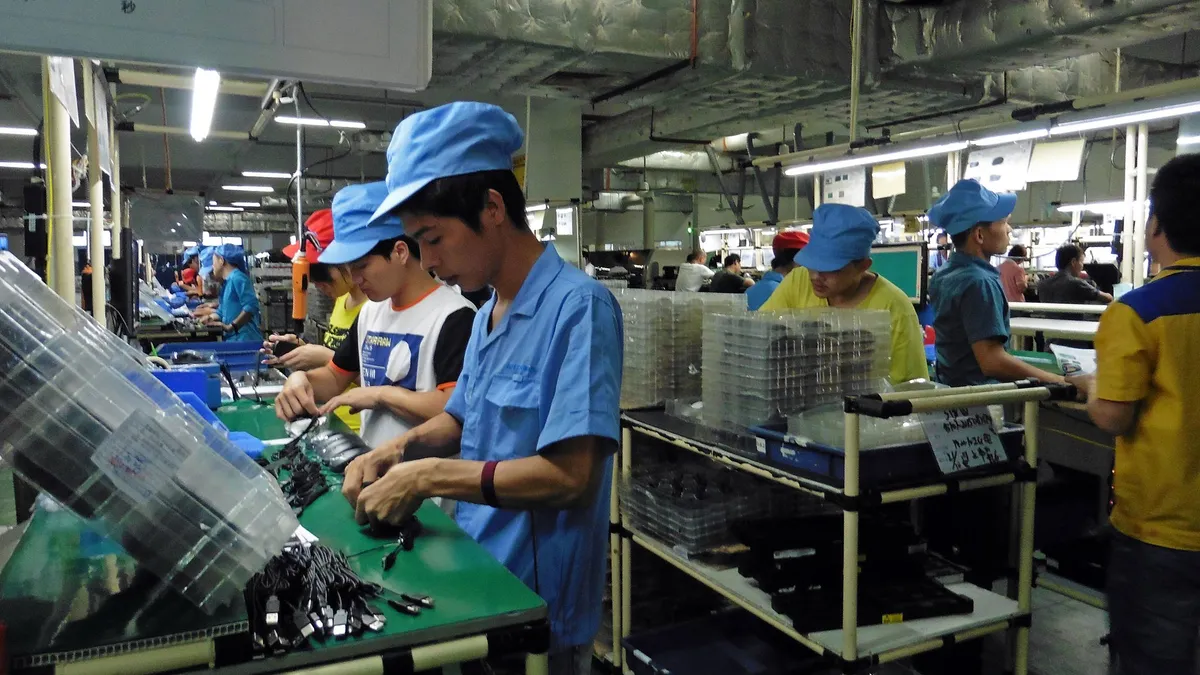Dive Brief:
- Roughly 21% of industry leaders believe their supply chains are resilient, according to a Gartner survey of 260 supply chain professionals released Wednesday. However, 55% of respondents think their supply chains will become resilient within two to three years. Resilience was defined as having good visibility and the ability to shift sourcing, production and distribution quickly when a disruption occurs.
- Part of developing this capability has involved accelerating firms' existing plans to shift part or all of their operations out of China — moves which began during the U.S.-China trade war in 2018 and 2019. As of March, when the survey concluded, 33% of respondents said they had moved sourcing and manufacturing out of China or planned to do so within the next two to three years.
- In addition to shifting sourcing and regionalizing or nearshoring certain operations, a Gartner report, "Weathering the Storm: Supply Chain Resilience in an Age of Disruption," released in May, calls for three additional measures leaders should take to develop resilience: establishing inventory buffers, using technology to harmonize production and operations, and establishing strategic partnerships to diversify other parts of the supply chain such as logistics.
Dive Insight:
Building redundancies throughout the supply chain — in the form of alternate production and distribution sites or supplier networks — was often seen as an unaffordable precaution before the events of the last two years, according to Gartner's report. Now, they are becoming part of critical risk management strategies.
"We are at a crossroads in the evaluation of global supply chains that pits just-in-time systems designed to improve operational efficiency against just-in-case plans that emphasize planning and preparing for a range of plausible scenarios," Kamala Raman, a senior director analyst in Gartner's supply chain practice, said in a statement.
Moving forward, companies will need to assess how much risk they are willing to take on at the expense of the efficiency and cost savings from just-in-time and lean inventory models, she said.
However, Raman believes these measures are just the first steps in surviving the uncertainty the coronavirus pandemic has caused and preparing for disruptions of this scale in the future.
"COVID-19 will open up a dichotomy between the cash-rich and cash-poor firms in terms of who can afford to invest in resilience," Raman said in an email to Supply Chain Dive. "Multinational brand owners (who are generally stronger and more able to withstand a shock like today’s situation) who wish for their critical suppliers to diversify may need to find ways to support them in this time of cost optimization in creative ways ... [otherwise] the larger supply chain ecosystem cannot diversify."
These measures could include setting up joint ventures to develop new production sites, establishing long-term volume commitments or participating in industry-wide coalitions to get additional support while shifting production.
Of respondents to Gartner's survey, 61% reported their supply chains were moderately resilient, with decent visibility, but they couldn't "justify making the investment to modify our supply chain footprint," choosing instead to focus on "managing disruptions once they occur than investing in resilience."
While C-suite buy-in can be difficult to get, depending on the firm, Gartner's report points out that "in the wake of COVID-19, many companies will be under pressure from investors, regulators and other stakeholders to increase their ability to withstand external shocks," which may move the needle in supply chain managers' favor.
A PwC survey of financial leaders in March found 34% of CFOs said supply chain issues had moved up among their top three concerns amid the coronavirus outbreak, and are considering making changes to their operations as a result.
To positively influence these potential changes, Gartner recommends supply chain leaders leverage their teams' expertise in this current crisis to develop long-term solutions that benefit the entire enterprise, such as improving technology and data analytics capabilities, and using what visibility they currently have to be as proactive as possible. Building on those wins, and successfully mitigating disruption as a result, can generate the will to invest in broader resilience measures.













